This tutorial will show you how to install VMware Workstation 16 Pro on RHEL/CentOS, Fedora, Debian, Ubuntu, and Linux Mint.
VMware Workstation 16 Pro is popular software that allows you to run multiple different virtual machines on physical hosts using the concept of Type II of hypervisors (Hosted Hypervisors). This tutorial also discusses some common issues during the installation process.
What is new in VMware Workstation 16 Pro
- Container and Kubernetes Support – Build, run, pull and push container images using the vctl command-line tool.
- New Guest operating system support for RHEL 8.2, Debian 10.5, Fedora 32, CentOS 8.2, SLE 15 SP2 GA, FreeBSD 11.4, and ESXi 7.0.
- Support for DirectX 11 and OpenGL 4.1 in the Guest.
- Vulkan Render Support for Linux Workstation
- Dark Mode support for optimized user experience.
- vSphere 7.0 Support
- Support for ESXi Host Power Operations such as Shutdown, Restart and Enter/Exit Maintenance Mode.
- With improved OVF/OVA support for testing and experimentation within Workstation.
- Scan for Virtual Machines in local folders as well as on network shared storage and USB drives.
- Automatically Suspend Shared Virtual Machines Upon Host Shutdown.
- New GTK+ 3 based UI for Linux.
- There are also some other features that you will discover by practice and make hands-on labs.
Prerequisites
- Make sure that your system is 64-bit “VMware Doesn’t provide 32-bit edition” and its virtualization feature is enabled.
- Unfortunately, the 16th edition doesn’t support 32-bit processors may be due to the features improvements that need the higher level of processor BUT VMware didn’t talk about specific reasons.
- Make sure you have a license key to activate the product OR you will work in the evaluation mode “the same features but with ONLY 30 day period” after the evaluation mode period ends YOU MUST enter a license key to activate the product.
- Before you begin this guide, you will need the root account OR non-root user with sudo privileges configured on your system (Physical host).
- Make sure your system and its kernel are up to date.
Step 1: Downloading VMware Workstation 16 Pro
1. First login into your server as a root or non-root user with sudo permissions and run the following command to keep your system up-to-date.
# yum update [On RedHat Systems] # dnf update [On Fedora] # apt-get update && apt-get upgrade [On Debian Systems]
2. Next, download the VMWare Workstation Pro installer script bundle from the VMware official site using the following wget command.
# wget https://download3.vmware.com/software/wkst/file/VMware-Workstation-Full-16.1.0-17198959.x86_64.bundle
3. After downloading the VMWare Workstation Pro script file, go to the directory which contains the script file and set the appropriate execute permission as shown.
# chmod a+x VMware-Workstation-Full-16.1.0-17198959.x86_64.bundle
Step 2: Installing VMWare Workstation 16 Pro in Linux
4. Now run the installer script to install VMWare Workstation Pro on a Linux host system, which will be installed silently, and the installation progress is shown in the terminal.
# ./VMware-Workstation-Full-16.1.0-17198959.x86_64.bundle OR $ sudo ./VMware-Workstation-Full-16.1.0-17198959.x86_64.bundle
Sample Output
Extracting VMware Installer...done.
Installing VMware Workstation 16.1.0
Configuring...
[######################################################################] 100%
Installation was successful.
Step 3: Running VMWare Workstation 16 Pro
5. To start the software for the first time you will find some issues as discussed below with fixes. To start the software type vmware in the terminal.
[[email protected] Downloads]# vmware
After running the above command, if you don’t have GCC GNU C Compiler, you will see the message which notifies you to install the GCC compiler and some components. Just press ‘Cancel‘ to continue.
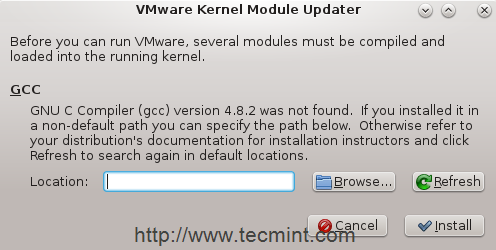
9. Return to the terminal, then let’s install “Development Tools”.
[[email protected] Downloads]# yum groupinstall "Development tools" [On RedHat Systems] [email protected]:~# apt-get install build-essential [On Debian Systems]
10. When it finished, let’s try to start the software again.
[[email protected] Downloads]# vmware
This time another issue will appear, its talk about kernel-headers, select “cancel” and let’s check if it installed or not.
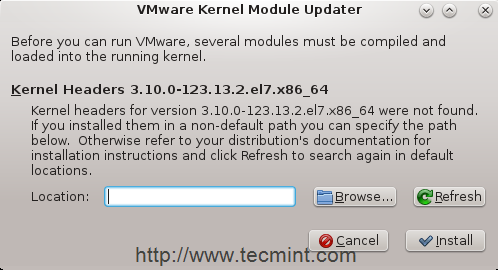
[[email protected]]# rpm -qa | grep kernel-headers [On RedHat systems] [email protected]:~# dpkg -l | grep linux-headers [On Debian systems]
If nothing appears install it using it.
[[email protected]]# yum install kernel-headers [On RedHat Systems] [email protected]:~# apt-get install linux-headers-`uname -r` [On Debian Systems]
11. On RedHat-based Linux distributions, you need to install the “Kernel-devel” package as shown.
[[email protected] Downloads]# yum install kernel-devel [On RedHat Systems]
12. When it finished, let’s try to start the software again “be patient, trust me ..it will be the last one ;)”.
[[email protected] Downloads]# vmware
Congratulations! we have solved all the issues, you will see this window.
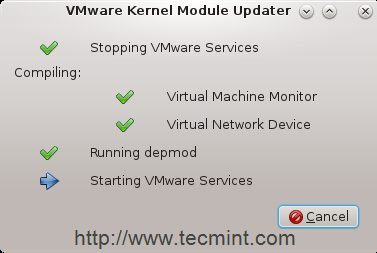
It makes some modification in kernel modules and compiling some new tools in just fewer minutes, the application start and home window appears and waits for you to kick start it and make your virtual machines.
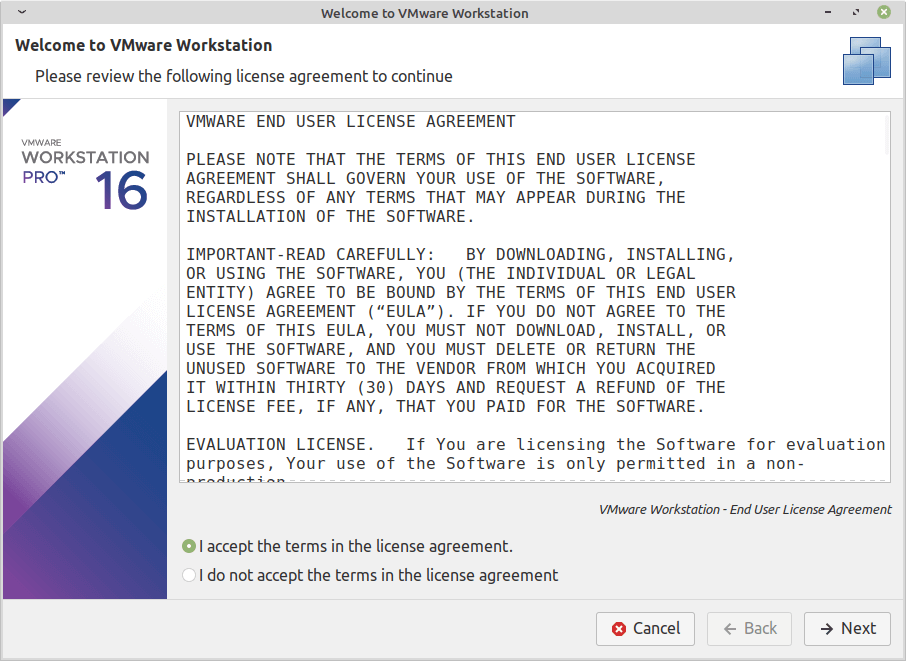
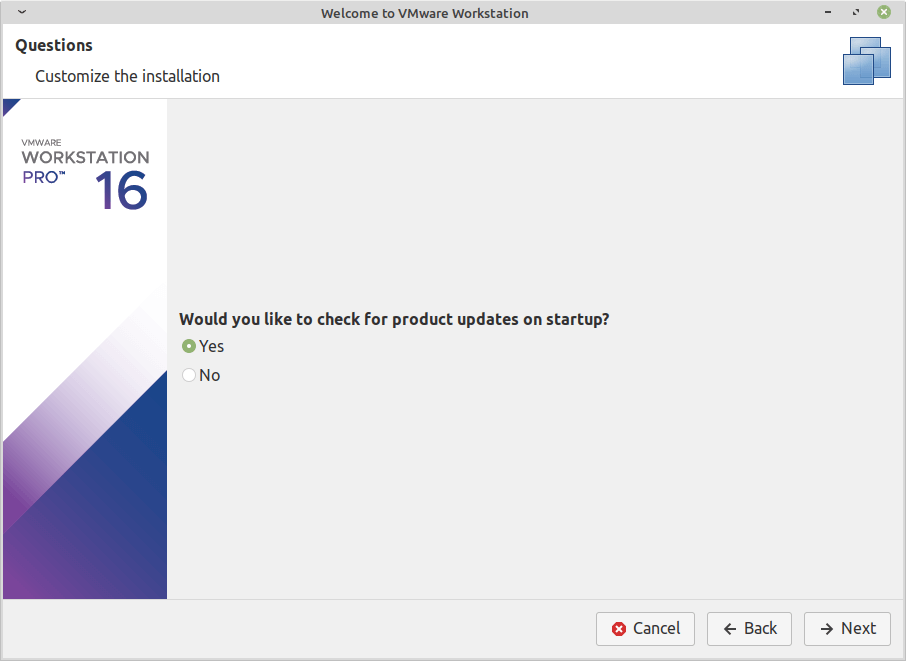
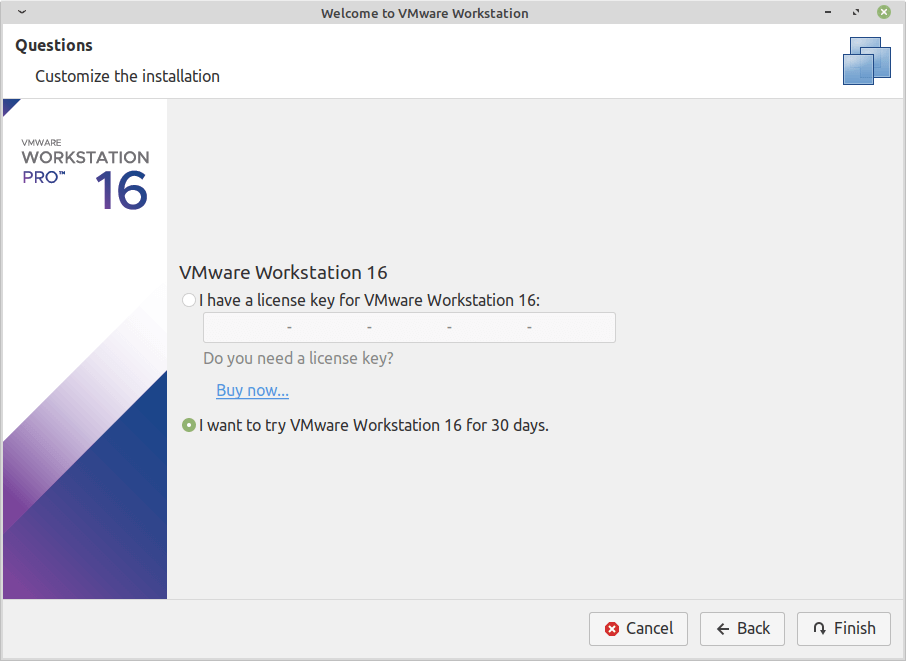
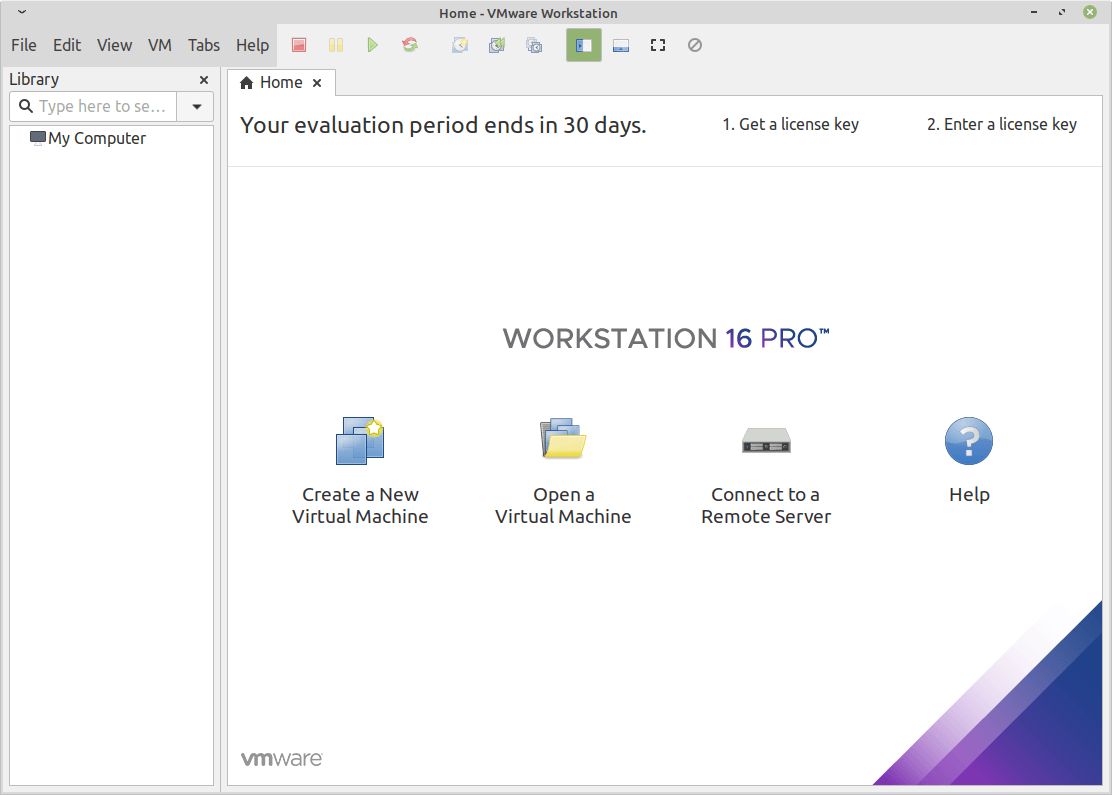
Uninstall VMWare Workstation Pro from a Linux
In a terminal window, type the following command to uninstall Workstation Pro from a Linux host.
# vmware-installer -u vmware-workstation OR $ sudo vmware-installer -u vmware-workstation
Sample Output
[sudo] password for tecmint:
All configuration information is about to be removed. Do you wish to
keep your configuration files? You can also input 'quit' or 'q' to
cancel uninstallation. [yes]: no
Uninstalling VMware Installer 3.0.0
Deconfiguring...
[######################################################################] 100%
Uninstallation was successful.
Conclusion
Congratulations! you’ve successfully installed VMWare Workstation on your Linux system.
